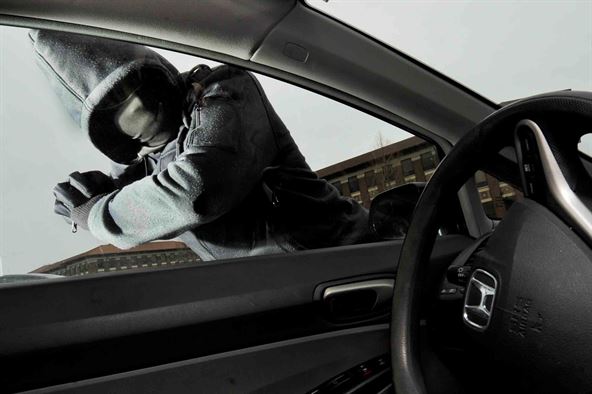It’s the most commonly reported crime in Victoria since 2014.
Nationally, there were 148 reported cases of it per day from 2015-2016, while the 2016/17 financial year saw the total number of cases increase to 56,184 – 157.8 per day.
The crime is “theft from a motor vehicle”, and it’s unfortunately become all too common in our suburbs.
According to the National Motor Vehicle Theft Reduction Council (NMVTRC), passenger/light commercial (PLC) cars were stolen 45,666 times in the latest financial year, an increase of six percent from 2015.
If each car that was stolen in the last financial year had half a tank of petrol when it was stolen, there would have been $385,000 worth of stolen petrol, enough to drive around the world 82 times.
33 percent (12,041) of all PLC short-term theft occurred in Victoria, the state that also had the greatest percentage of the country’s profit-motivated PLC thefts (34 percent).
Per 1000 vehicle registrations, Victoria still has the highest car theft rate in Australia.
Executive Director of the NMVTRC Ray Carroll tells of his concern regarding the rise of car theft and other burglaries.
“Car theft peaked in 2001 with 142,000 thefts and then was followed by successive yearly falls until around 2012 which came in at around 50,000,” Mr Carroll tells upstart.
“Then we saw our first upward trend.”
This trend took the form of “theft of [car] keys”, which were usually obtained through house burglaries.
Statistics from the NMVTRC show Victoria is car theft has jumped 61 percent higher in the last five years.
New South Wales, South Australia, Western Australia and Queensland have all recorded drops in this same time frame.
When asked why people tend to break into vehicles, Carroll linked a new wave of offending, which spurred on by the “Apex gang” and new copycat offenders.
“This new wave of offending very quickly ramped up the community’s fear of crime and there has been a corresponding ramping up of police and government responses,” he says.
“Interestingly, this was a unique Victorian issue and while it certainly happens in other states, it’s not anywhere near the same degree.”
Carroll says 70 percent of all car theft is now committed from a residence with car keys as the target.
The new craze stunned Melbourne local Andrew Mills on March 11, 2016.
“I left for work like I usually would in the morning, kids were at school, my wife came home to the door being wide open and the house was absolutely ransacked,” Mr Mills tells upstart.
“My immediate feeling was I felt betrayed and ripped off. The privacy and security of my house had been breached. The kids could’ve been at home, then what would’ve happened? I was concerned for my family.”
Many cars can now be electronically manipulated to override their immobiliser, via an onboard diagnostic port (OBD).
“Unlike many places in Europe where OBD theft is becoming quite prevalent, our crooks don’t seem to want to bother with all that which is why key theft is [nowadays] so popular,” Mr Carroll says.
The solution to all of this?
New GPS trackers will be installed in hundreds of Victorian cars in an attempt to reduce car theft and combat car thieves.
The system is to be introduced in November this year, with “up to 1,000 trackers” to be fitted in cars from the South-Eastern suburbs of Melbourne.
“The GPS tracker trial is ours, which we are doing in conjunction with Victoria Police,” Mr Carroll tells upstart.
“Its main aim is to ensure we can integrate an external tracking system provider with the police communications system, so that in the event a tracked car is reported stolen, the police comms centre can immediately access their system and start to track the car and direct an operational response.”
The financial implication is another aspect of theft that leaves victims on edge.
Andrew Mills continues to nervously await as the return of crooks and their stolen car keys.
“It’s frightening to think that at any given time my car can be taken from anywhere,” Mr Mills says.
Among the other things stolen from the Lower Plenty home were laptops, phones, jewellery and a bundle of cash.
Bizarrely, the intruders also had time to take a beer from the fridge and other frozen foods.
“They stole all that and just completely trashed our rooms. I had an 11-year-old daughter at the time, why would you do that?”
Mr Mills claims to upstart that there were three other houses broken into “within a week and a half” on his street, while knowing of two other people who had work tools stolen from their utes in neighbouring suburbs.
The 37-year-old instantly became wary of his surroundings when walking the streets.
“After the break-in I concentrated on a lot of people walking past, wondering if that was them. The self-doubt when I was in public grew.”
According to the Australian Bureau of Statistics, in 2016, the number of motor vehicle thefts rose for the second consecutive year to reach its highest levels since 2012, up nine percent from 51,525 victims in 2015 to 56,086 victims.
While it is yet to be seen if the new GPS trackers will be successful, attempting to combat the issue of car theft is an initiative Victoria Police and the NMVTRC hope will help stamp out an all too common crime.

Jarryd is a third-year Bachelor of Media and Communication (Sport Journalism) student at La Trobe University. Follow him on twitter @j96barca.







